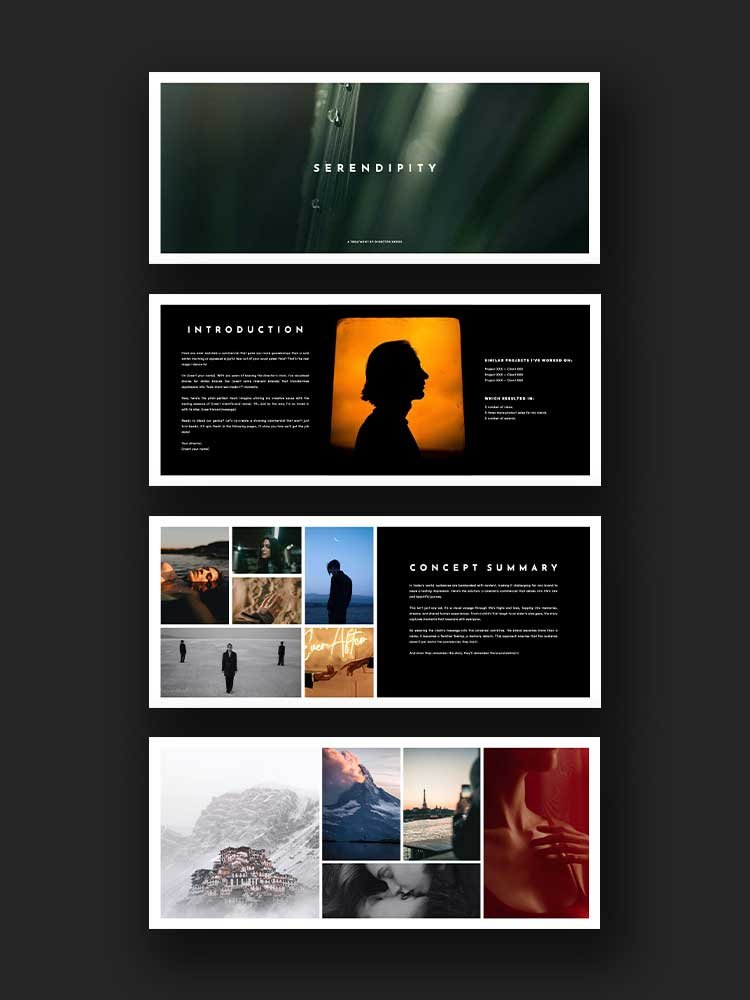How To Write And Design A Director's Treatment
Directing a film, music video, or commercial is more than just capturing visuals and telling a story. It's about presenting a creative vision that captivates the hearts and minds of your audience. Crafting a compelling director's treatment is the first step to bringing this vision to life.
This essential document is key to pitching your ideas, collaborating with your creative partners, and ensuring your project succeeds. This article will delve into the art of treatment writing, exploring the elements and techniques you must master to create treatments that stand out.
The Importance of Director's Treatments
Before diving into the nitty-gritty of writing and designing a director's treatment, let's first understand why they are so crucial:
Pitching process
Treatments are the backbone of the pitching process. They give producers, production companies, and clients a glimpse into your creative direction, helping them decide whether to greenlight your project or pass on it.
Creative partner collaboration
A well-crafted treatment allows you to effectively communicate your vision to the crew involved, such as the production designer, sound design team, and other directors. This ensures everyone is on the same page during pre-production and production.
Blueprint for the final film
Your treatment serves as a dry run for the finished product, helping you and your team iron out any potential issues before shooting begins.
Three Essential Elements of a Director's Treatment
Creating a successful director's treatment requires you to weave together three key elements: story, visual style, and why you? Let's examine each in detail:
Story
At its core, a good director's treatment should convey your film's or commercial's narrative. This includes the script, character development, and relevant themes or motifs. When writing your treatment, make sure to present the story in an engaging and concise manner. This will help producers and clients quickly grasp the essence of your project and gauge its potential.
Visual style
The visual style of your treatment is a reflection of your director's vision. This includes everything you see on screen: casting choice, color palette, art direction, camera movement, and set design. Visual references can help you translate your thoughts on paper and bring your stylistic approach to life. Remember, you want your visuals to effectively convey your film's or commercial's tone and atmosphere, so be deliberate and thoughtful with your choices.
Why you?
As a sales and marketing tool, your director's treatment needs to answer the question: "Why should they choose you?" To do this, highlight your unique skills, experiences, and creative sensibilities. Showcase your accomplishments, such as awards, successful projects, or testimonials from satisfied clients. Demonstrating your value as a director and the benefits of working with you can help persuade producers and clients that you're the perfect fit for their projects.
The Art of Treatment Writing: Tips and Techniques
Now that we clearly understand the essential elements of a director's treatment let's explore some tips and techniques to help you craft a compelling and persuasive document.
Research
A well-informed treatment is more likely to win over clients and producers. Do your homework and research similar projects, industry trends, and the preferences of your target audience. This will help you present your ideas in a way that resonates with the people who matter most.
Be concise
While it's essential to provide enough detail for your audience to grasp your vision, avoid overwhelming them with information. Aim for a balance between thoroughness and brevity, focusing on the most critical aspects of your project.
Use markdown formatting
To make your treatment more engaging and visually appealing, use markdown formatting. This includes bold text, unordered and ordered lists, and clear headings. Well-structured and easy-to-read treatments are more likely to captivate your audience.
Incorporate visuals
A picture is worth a thousand words, which couldn't be truer regarding treatments. Including reference images, mood boards, and storyboards can help you convey your vision more effectively than words alone. Be selective with your chosen visuals, ensuring they complement and enhance your written content.
Showcase your creativity
A director's treatment is an opportunity to demonstrate your unique creative flair. Don't shy away from expressing your artistic sensibilities and personal style. This will set you apart from other directors and make your treatment more memorable.
Proofread and revise
Before submitting your treatment, make sure it's polished and professional. Carefully proofread your document to eliminate any errors, and revise it as needed to ensure your ideas are clearly and compellingly presented. You can use a free tool like Grammarly to remove all grammar and punctuation errors.
The Power of Collaboration: Working with Your Creative Partners
A director's treatment is more than a solitary endeavor; it's a collaborative process involving working closely with your producer and creative partners. Here are some tips to help you successfully navigate this aspect of treatment writing:
Communicate with your team
Keep an open line of communication with your production designer, sound designer, editor, and other crew members. Their input and expertise can greatly enhance your treatment and improve the final film.
Be open to feedback
Don't be afraid to seek feedback from your creative partners. They can provide valuable insights that can help you refine your ideas and make your treatment even stronger.
Be flexible
Remember that your treatment is not set in stone. Be open to making changes and adapting your vision as you collaborate with your team. This flexibility will help ensure that your final film is the best it can be.
Conclusion: The Director's Treatment as a Launchpad for Success
A well-crafted director's treatment is more than just a document to pitch ideas – it's a powerful tool that can propel your career forward and help bring your creative vision to life.
By mastering the art of directors' treatment writing and effectively collaborating with your creative partners, you'll be well-equipped to pitch your ideas, secure funding, and create films, music videos, and commercials that resonate with your audience.
In the competitive film and commercial production world, a standout director's treatment can differ between landing your dream project or watching it slip through your fingers.
Invest time and effort into your idea, crafting a treatment that truly reflects your unique vision and showcases your passion for storytelling, and you'll be well on your way to achieving success in the industry.
Remember, as a director, your treatment is the foundation for your final film. Make it strong, compelling, and an authentic representation of your creative spirit.
Your director's treatment is not just a pitch document to win the job – it reflects who you are as a filmmaker and the first step on your journey to creating unforgettable cinematic experiences.



































